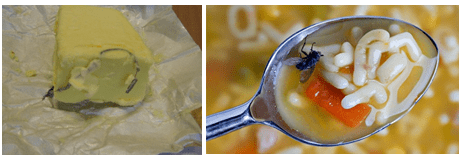In the case of food packaging, it’s not just the inside that matters: food packaging has a significant impact on product quality and safety. It has the potential to make or break your food safety measures. Protecting the product on the inside begins with identifying and eliminating external threats.
This article addresses the three most common contamination risks in food packaging. These risks can be found at every stage of the food supply chain, from production to processing, packaging, and transportation.
1. Physical Contamination
Millions of food products are recalled each year as a result of foreign contaminants discovered by consumers. When a physical object contaminates food, this is referred to as physical contamination. Glass, wood, stones, metal, jewellery, filth, insulation, bone, plastic, personal effects, bullets, and needles are the most common physical contaminants. Weird and unusual objects in food products frequently make news headlines.

Many precautions are taken by the food industry to ensure that any end-product that reaches consumers is free of physical contaminants. Techniques for preventing and identifying foreign objects in food packaging are rapidly improving, resulting in a significant reduction in the number of physical contaminants in food packaging.
2. Chemical Contamination
Chemical contamination is defined as the presence of chemicals where they should not be or the presence of a greater amount than is considered safe. This type of packaging contamination is extremely dangerous, because a high concentration of chemicals present in edible products can pose serious health risks.
Food production, packaging, and preparation is a long process, with each stage potentially introducing chemical contaminants into the food. As a result, there are numerous potential risks of chemical contamination. One common cause is direct food contact with packaging materials, which can result in chemical contamination from the migration of certain harmful substances into foods. Additionally, the use of unapproved or incorrect additives may result in food contamination. Other types of chemical contamination are:
- Pest control product contamination
- Chemical contamination caused by equipment maintenance chemicals
- Secondary packaging, warehousing, and transportation contaminants
- Uncontrolled or food-incompatible chemical substances used to aid the manufacturing process
3. Biological Contamination
The unintentional introduction of microbes such as bacteria, yeast, mould, fungi, and viruses is referred to as biological contamination. This type of contamination can occur at any stage of the manufacturing process if proper precautions are not taken. Pests can be disastrous to your product and business, so proper precautions must be taken at all times. Pests caused by stored product insects (SPIs), weeds, and plant diseases caused by other organisms of fungus growth are all examples of biological contamination.
Consequences of contamination
Product recalls can not only result in financial losses, but can also seriously harm the reputations of many manufacturers and sellers. If consumers lose their confidence towards the companies they buy from, they won’t pay for their products in the future. That’s why recalls have devastating effects on a company.

How to reduce the risks of contamination
Implementing an effective food safety management system have been proven to significantly reduce the risks of contamination through setting up a clean and well-regulated production environment and establishing production controls. In of the previous articles, we have discussed why should packaging companies implement GMP. Click here to learn more.
Conclusion
Wish to know more about GMP & HACCP implementation? Book our limited FREE Consultation right now!



